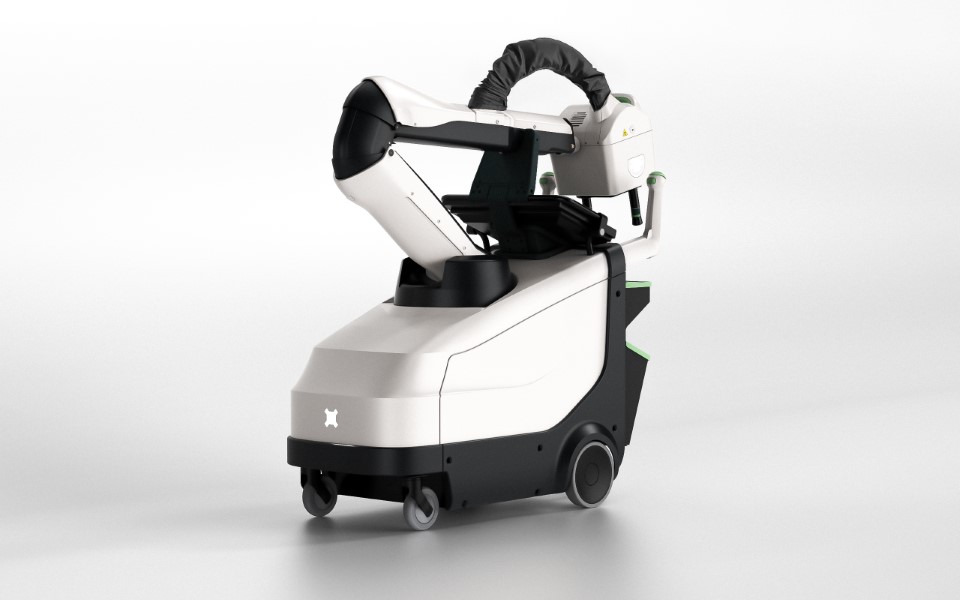

Cold cathode X-ray technology is a groundbreaking advancement in how X-rays are generated, distinguished by its unique method of electron generation. Unlike conventional X-rays, which use a hot cathode to emit electrons through thermionic emission (by heating a filament), cold cathode X-ray systems generate electrons at room temperature through a process called field emission.
This difference opens up exciting possibilities in X-ray imaging, particularly in simplifying and miniaturising diagnostic medical imaging equipment, since it offers more compact, efficient, and versatile solutions. A simple comparison of advancements under cold cathode X-ray technology is the advancements that LED lighting has made compared to conventional lightbulb technology.

In traditional X-ray tubes, a filament needs to be heated to high temperatures, typically exceeding 1,000°C, to emit electrons. This high temperature limits how small and power-efficient these devices can be. Cold cathode X-rays, on the other hand, rely on nanomaterials such as carbon nanotubes to emit electrons when an electric field is applied, generating no heat. Removing the need for sophisticated heat insulation and heat removal methods allows for much smaller and lighter X-ray systems. It also allows more precise control of dose and faster on/off times.
These design improvements make cold cathode X-ray technology ideal for portable and battery-operated devices, such as the Micro-X Rover, a lightweight mobile X-ray unit that provides flexibility for use in settings where conventional X-ray machines are impractical, such as in remote areas or emergency field settings.

Achieving reliable cold cathode performance at the high voltages necessary for medical imaging is technically challenging, and has been the subject of leading research for many years. Unlike hot cathode systems that have decades of refinement, cold cathode technology is still emerging and presents several engineering hurdles.
A major issue with cold cathode technology is ensuring consistent and stable high-current electron emission under high-voltage conditions. Medical imaging requires tubes that deliver high voltages ranging up to 140kV and high currents ranging up to 400mA to deliver the highest quality X-rays. Limitations in performance power can affect image quality or limit what pathologies the device can image. Another issue is that to operate safely, the X-ray tubes must contain an Ultra High Vacuum (UHV). These are very hard to manufacture and the high voltages cause degradation or breakdown over time, therefore posing risks to tube longevity and reliability. Additionally, achieving consistent field emission in the cold cathode requires advanced material science to create nanostructures capable of delivering uniform and sustained emission.
Micro-X has been able to overcome these challenges with its unique Nano Electronic X-Ray (NEX) technology. We are now pioneering imaging products that drive the next generation of compact, powerful, and reliable X-ray imaging solutions. With ongoing advancements in cold cathode technology, Micro-X is leading the industry towards a future where lightweight, low-power X-ray systems can deliver high-quality imaging even in the most challenging environments.



In the final newsletter for 2025, we reflect on some of the achievements of the year, while looking towards what is to come in 2026.


The newly updated Rover Mobile DR X-ray system will be launched at the Radiological Society of North America (RSNA) Annual Meeting in Chicago this November, building on Rover's proven strengths in lightweight, motor-free mobile imaging.


Ahead of World Stroke Day on October 29, Stockhead’s host Fraser Palamara spoke with Australian Stroke Alliance co-chair Professor Stephen Davis about the massive global impact of stroke and the technology reshaping how it’s treated.

Micro-X creates revolutionary X-ray technology to better lives.
Our Purpose
Find out how Micro-X is creating new opportunities for industries across the world.
Find out more
They’re the visionaries and innovators behind our X-ray technology, products, culture and ethos.
Meet the team